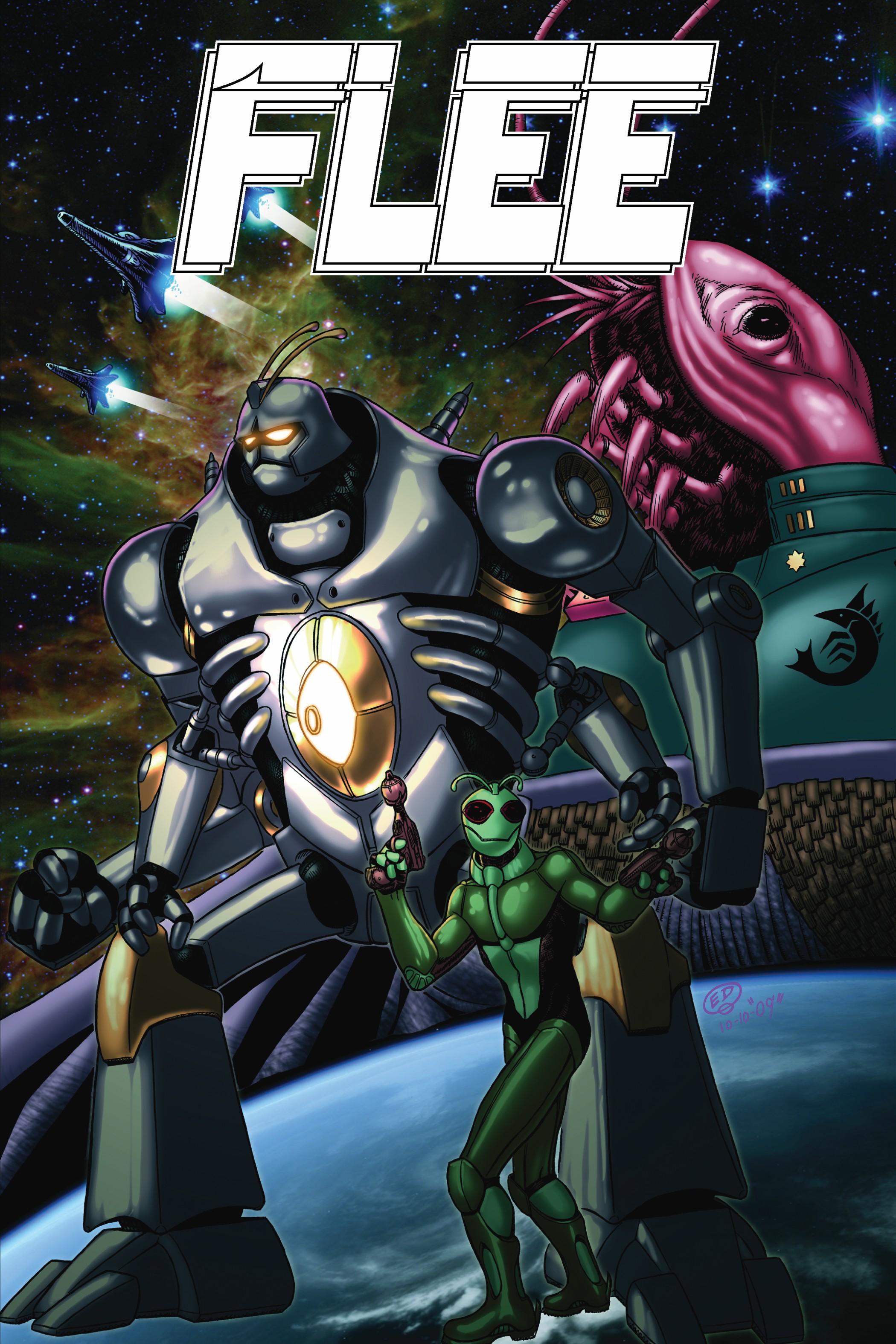
Warning! Before you start reading this, please read this disclaimer:
“Everything you are about to read is an opinion. At no time should you think these are facts or the opinions of Comicbooked.com.”
– Raphael Moran
There’s no denying it. Some will try to stop it and others will try to delay it, but sooner or later everyone has to come to grips with the fact that the printed comic will be dead. I don’t want to be the Nostradamus of the comic book apocalypse, but we need to come to grips with it. It won’t happen in 10 years, or even 20, but I can guarantee that within my hopefully very long lifetime I’ll actually live to see that day when it happens. The future for all small press indie creators is digital because right now print is just not a feasible option economically for many.
Fans have been claiming the digital comic revolution has been slowly killing off the printed comic page, but there really is no one to blame but the comic industry itself. For the last twenty years the sales have been teetering on the razors edge of despair. Our distribution system happens to be the worse thing in the business spectrum. I have nothing against our beloved comic shops, but the moment comics became exclusive to those shops was when you started to put the nail in the coffin. The Diamond way of distributing books is a flawed system and the main problem is they are monopolizing the industry and it’s the little people that suffer in the process.
The Internet has been in a flurry of news at C2E2 with a number of recent developments about the digital revolution. I want to see the medium I love survive. Don’t get me wrong when I’m saying all of this. I love printed comics, but the way things are going, if we don’t do something, our grand kids will never have great feeling of reading a comic in your hands.
Superstar comic creator, Mark Waid, recently said in his blog that starting a creator-owned print comic has a number of difficulties that makes it almost impossible for them to be a success in print form. Here is an excerpt from his blog that talks about Diamond.
The “Premier Publishers” –DC, Marvel, Dark Horse, Image, IDW–can get more favorable terms because they account for so much market share, but the smaller ones have no negotiating leverage. Moreover, Diamond can decline to distribute any new comic it feels won’t make a significant profit or doesn’t show enough “promise,” as is their right. Now, none of this is a condemnation–Diamond’s built its business from the ground up and seems to be very good at what it does, and I’m not suggesting they haven’t earned their status–but because they’re a monopoly, this makes Diamond a very powerful gatekeeper in the industry, and that’s not changing. You want to sell comics to anyone, you sell through Diamond.
He then goes on into detail about the percentage that diamond takes and other things.
Typically, a non-Premier publisher sells it’s wares to Diamond at 40-45% of cover price. Let’s say 40%. You’re one of those publishers. That means that if your comic is cover-priced at $3.99 (which, at the moment, seems to be the average bottom threshold), you’re making roughly $1.60 per copy. Which actually doesn’t sound too awful, right? Let’s say you’re not a Bendis- or Millar-level sales superstar but neither are you a total unknown, so you’re selling 5,000-6,000 copies of each issue, very respectable in this day and age. Less if you’re a brand-new creator with no track record among retailers, but for argument’s sake, let’s say 5-6K. That’s, what, eight or nine grand gross?
But here’s the big bite: at those print-run levels, that comic is costing you around a dollar a copy just to print. Maybe a little more, maybe a little less. What’s that? You’ve decided to forego expensive color for cheaper black and white? You’d be surprised how little that lowers the cost. Printing, shipping and various related charges–that’s where you’re spending more than half your income. More than half. Not on creative, not on marketing, not on advertising, not on all of that put together. On printing the damn thing.
Say what you want about Waid, but I admire his honest words. He’s not afraid to say the truth. In fact Waid is embracing the digital medium so much now; he recently announced he’s creating a new digital comic website called Thrillbent and also one of the creators spearheading Marvel’s new Infinite digital comics.
Here are a bunch of observations from my own time in the industry to add to this whole discussion.
1- Printing costs for a single issue can be very costly, especially with all the nice glossy paper they use now. You can argue the fact that Marvel and DC can offset those costs by their ad revenue, but small press companies won’t be as lucky with getting a lucrative ad deal as the bigger companies would.
2- Diamond has a certain quota that each single issue must cross before they distribute a comic. So let’s say a publisher invests money into printing issue 1 and 2 of a comic, but suddenly those issues don’t meet their quota. You’re cut from distribution and stuck with all these copies you paid for. It’s because of this action; many publishers have stopped releasing mini-series and are going straight to large graphic novels. The quota is much different for graphic novels because they go to places beyond the typical comic shop like books book stores.
3- Things have gotten so bad for some publishers that some have either completely gotten rid of their printed comics all together and have gone straight to digital, while others are cutting back on their printed books in favor of digital ones.
4- Big companies like Marvel and DC are releasing digital exclusive comics. Marvel has their Infinite comics, while DC is putting out a whole line of comics, including a Smallville series. They’re saving a ton of money by doing this. If these are successful you’ll see more and more of it. Marvel is consistently the best selling publisher, still recently managed to fire dozens of staff members last year over cost and have been actively looking for artistic talent overseas, because it’s probably cheaper to hire.
5- Comic shops are usually few and far between. Every year more and more comic shops are going out of business. I personally know many friends that are intimidated to even step foot in one. Why would they spend four dollars on a book when they can download a copy for 99 cents online? These are troubling things.
I can go on with this list for a while, but I hate being a doomsayer. Some new distributors have put their name in the hat to challenge Diamond and there’s also print on demand that can be helpful for indie creators to get their work printed, but with the rise of digital sales, I think that’s eventually the best way to go. Is it too late? Can we still save the printed single issue comic? I have a few ideas on how to do that. In fact I, have a future installment of Comic Confidential what will go into deep detail on that very subject. Feel free to express you opinions on the comments section below and add to this great debate.
Next week though, I want to shift gears and talk with comic creator, Mike Hall. He’ll talk about a side of comics that bypasses all the stress and drama of all of these things I’m talking about. Mike does educational comics! Now that is something that can truly be helpful in industry.


















You can't collect a digital comic. Not everyone is in it for the appreciated value but if comics are to survive they will need to hit on all points. Collectability, creativity and and general appeal.